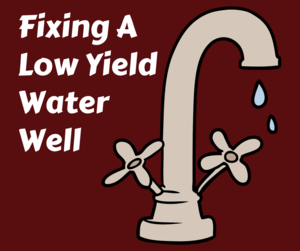CALL TODAY 1-800-441-6281
CALL TODAY 1-800-441-6281

How Does Environmentally Friendly Geothermal Heating Work
- Tags:
- geothermal wells
Geothermal heat is one of the most environmentally friendly and affordable ways to heat a home. A geothermal heat exchange can keep your home warm in the winter months without burning any fossil fuels and with less electricity than many air conditioners.
Geothermal energy is a growing way for New Englanders to heat their home, especially those who want to get away from expensive oil heat. But others who have not considered making the switch may be missing out on the benefits of geothermal because they just don’t know enough about it.
Where Does Geothermal Heat Come From?
Standard heat exchange systems function like an air conditioner in reverse. Instead of taking air and cooling it before blowing into the home, heat exchanges take air from outside the home and condense the heat energy to distribute throughout the home. These systems have to work especially hard in the winter and in the hottest days of summer.
Unlike the air above ground, the soil deep underground remains at a relatively constant temperature, around 50 degrees. Geothermal systems draw the earth’s thermal heat from the soil beneath the home’s property and the heat exchange condenses that heat into warm air. Because of the ground’s constant temperature, these systems don’t work as hard to keep the home cool or warm, meaning less electricity used and less cost for the owner.
How Do You Install A Geothermal System?
Geothermal systems typically use a specially drilled well to draw energy from the ground. These wells should only be installed by technicians certified by the International Ground Source Heat Pump Association. At Skillings & Sons, Inc., our geothermal well drilling technicians are IGSHPA certified.
After the well is drilled, pipes are installed into the well and connected to the heat exchange within the home. HVAC technicians install the heat exchange within the home and Skillings & Sons handles the work outside the home.
Are There Different Kinds Of Geothermal Systems?
Yes. In the Northeast, where it is common to find bedrock close to the earth surface, standing column well systems are the most popular choice. These systems draw heat from the water stored in aquifers below ground.
In this kind of a system, water is drawn up from the well toward the home through pipes and circulated into the building, where it meets the heat pump exchanger. The heat pump exchanger transfers the warm energy into the home or building’s heating system, and the water is then returned to the ground. This type of system does not contaminate the water source in any way. In fact, it is very similar to a conventional drilled well that contains an underground well pump and is used for geothermal, domestic and irrigation purposes.
The other type of geothermal system is called closed loop vertical. A series of boreholes are drilled into the ground, and long plastic pipes are inserted. These pipes are filled with a water solution, typically non-toxic antifreeze, and then sealed. The solution absorbs heat from deep within the ground and carries it into the home, where the heat pump concentrates the energy and circulates it through standard ductwork. In the summer, the process is reversed.
How Do I Know If My Home Is Right For Geothermal Heat?
People often assume that because they don’t live on a large piece of property that they cannot take advantage of the geothermal heat. Skillings & Sons has installed geothermal systems in some settings, from government buildings to small homes. Our certified technicians can help you determine if geothermal heat is an option for your home.
Learn more about residential geothermal systems before the federal tax credits disappear. Click the button below.

